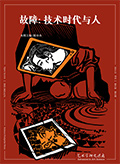

“坏画”作为一种先锋性的艺术方法, 贯穿于艺术史的进程中, 其解构与挑衅性在不同历史时期被赋予了不同的理解与评价。本文从两个层面探讨“坏画”的意义: 其一, 作为现代主义之后的美学概念, 它对抗古典美学, 赋予违背传统法则的绘画风格以历史意义, 成为一种美学批判与反思的推动力量; 其二, 作为艺术家内部的自我革命, “坏画”通过去技术化与自我解构, 重启创作系统, 展现了一种先锋态度。本文还分析了“坏画”在反拜物与反资本固化中的深层意义, 并探讨了中国禅宗水墨画中的“坏画”传统及其对现代艺术的启示。研究表明, “坏画”不仅是艺术史中的一种现象, 更是一种个体对抗固有权力与美学体系的自觉选择。
“Bad painting, ” as a pioneering artistic method, has permeated the history of art, with its deconstructive and provocative nature being interpreted and evaluated differently across various historical periods. This paper explores the significance of “bad painting” from two perspectives: first, as a post-modernist aesthetic concept, it challenges classical aesthetics, granting historical significance to painting styles that defy traditional rules and serving as a driving force for aesthetic critique and reflection; second, as an internal self-revolution for artists, “bad painting” restarts the creative system through de-technologization and selfdeconstruction, embodying a vanguard attitude. The paper also analyzes the deeper implications of “bad painting” in anti-fetishism and anti-capital solidification, and examines the tradition of “bad painting” in Chinese Zen ink painting and its inspiration for modern art. The research demonstrates that "bad painting" is not merely a phenomenon in art history but also a conscious choice for individuals to resist entrenched power and aesthetic systems.